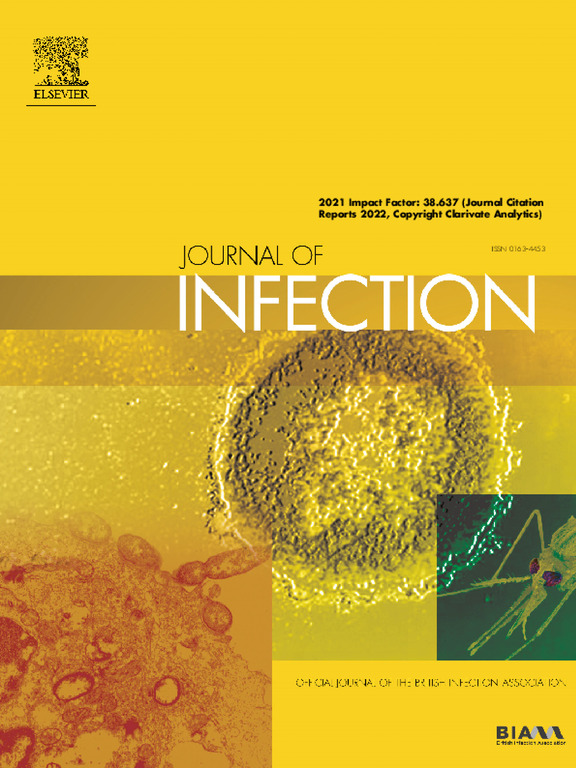Impact of climate change and extreme temperature on the incidence of infectious disease among children and adolescents in China: A nationwide case-crossover study with over 8.7 million cases between 2008 and 2019
IF 11.9
1区 医学
Q1 INFECTIOUS DISEASES
引用次数: 0
Abstract
Background
The relationship between ambient temperature and infectious disease incidence lacks comprehensive documentation. Our study, therefore, sought to systematically determine the national association between temperature and the incidence of infectious diseases, categorized into respiratory, gastrointestinal and enterovirus, and vector-borne categories. We aimed to study the association between extreme cold and heat extreme temperature on infectious disease occurrence among children and teenagers, and to evaluate the secular trends in these diseases in relation to temperature extremes.
Methods
We accessed the dataset encompassing 8,731,930 cases of 27 distinct infectious diseases, spanning respiratory, gastrointestinal and enterovirus infections, and vector-borne categories, across 507 Chinese cities from 2008 to 2019. Employing a time-stratified case-crossover design, we quantified the association between temperature exposure and the risk of infectious diseases specific to each city. The attributable fractions for temperature-related risks were determined by identifying extreme temperatures exceeding the 90th percentile and falling below the 10th percentile of the respective city-specific temperature distributions, indicative of heat and cold effects. A comparative analysis of these attributable fractions between the periods 2008–2010 and 2017–2019 was conducted to evaluate the secular changes of infectious diseases associated with cold and heat.
Findings
Our analysis revealed significant non-linear associations between temperature and the incidence of specific infectious diseases. Cold temperatures were found to be responsible for 1.35% (95% CI: 1.18 to 1.51%) of respiratory infectious disease cases. In contrast, heat was attributed to a lower proportion, with 0.29% (95% CI: 0.25 to 0.33%) of such cases. Among gastrointestinal and enterovirus diseases, a more substantial 4.93% (95% CI: 4.82 to 5.04%) of cases were linked to heat exposure. Notably, vector-borne diseases demonstrated the highest attributable fraction to heat, with 22.12% (95% CI: 21.82 to 22.41%) of cases affected. Specifically, five diseases—scarlet fever, tuberculosis, mumps, leprosy, and typhus—exhibited an increased incidence associated with cold temperatures. Notably, for scarlet fever, leprosy, and typhus, the attributable fraction escalated from the period 2008–2010 to 2017–2019. However, findings for leprosy should be interpreted with caution due to its low incidence. As for heat-related diseases, thirteen were identified, with the attributable fraction for nine diseases—tuberculosis, pertussis, hand, foot, and mouth disease, infectious diarrhea, dysentery, hepatitis A, typhoid and paratyphoid, dengue, and Japanese encephalitis—showing a marked increase over the same comparative timeframes.
Interpretation
The temperature increase observed from 2008–2010 to 2017–2019 has been accompanied by a rising trend in heat-related infections. Among all infectious diseases in Chinese children and adolescents, more than half (13 out of 24) are heat-related, compared to five infections linked to extreme cold. The risk of gastrointestinal and enterovirus infections was associated with extreme hot temperatures, with vector-borne diseases particularly responsive to extreme heat. These findings highlight an urgent requirement for proactive public health measures to address the potential impact of temperature variability on infectious disease outbreaks, safeguarding vulnerable demographics in the context of climate change.
气候变化和极端温度对中国儿童和青少年传染病发病率的影响:一项2008年至2019年超过870万病例的全国病例交叉研究
背景:环境温度与传染病发病率之间的关系缺乏全面的文献记载。因此,我们的研究试图系统地确定全国温度与传染病发病率之间的关系,传染病分为呼吸道、胃肠道和肠道病毒以及媒介传播的类别。我们的目的是研究极冷和极热极端温度与儿童和青少年传染病发生之间的关系,并评估这些疾病与极端温度的长期趋势。方法:我们访问了包含8,731,930例27种不同传染病的数据集,涵盖呼吸道,胃肠道和肠道病毒感染以及媒介传播类别,涵盖2008年至2019年中国507个城市。采用时间分层病例交叉设计,我们量化了温度暴露与每个城市特有传染病风险之间的关系。温度相关风险的归因分数是通过确定极端温度超过各自城市特定温度分布的第90个百分位数和低于第10个百分位数来确定的,表明了热和冷的影响。对2008-2010年和2017-2019年期间的这些归因部分进行了比较分析,以评估与冷热相关的传染病的长期变化。结果:我们的分析揭示了温度与特定传染病发病率之间的显著非线性关联。发现低温是1.35% (95% CI: 1.18至1.51%)呼吸道传染病病例的原因。相比之下,热量归因于较低的比例,为0.29% (95% CI: 0.25至0.33%)。在胃肠道和肠道病毒疾病中,4.93% (95% CI: 4.82至5.04%)的病例与热暴露有关。值得注意的是,病媒传播的疾病显示出最高的归因于热的比例,占受感染病例的22.12% (95% CI: 21.82至22.41%)。具体来说,五种疾病——猩红热、肺结核、腮腺炎、麻风病和斑疹伤寒——的发病率与低温有关。值得注意的是,从2008-2010年到2017-2019年,猩红热、麻风病和斑疹伤寒的可归因比例有所上升。然而,由于麻风病的发病率较低,对其结果的解释应谨慎。至于与热有关的疾病,确定了13种,其中9种疾病的归因比例在相同的比较时间框架内显着增加,这9种疾病是肺结核、百日咳、手足口病、传染性腹泻、痢疾、甲型肝炎、伤寒和副伤寒、登革热和日本脑炎。解释:2008-2010年至2017-2019年观测到的气温升高伴随着热相关感染的上升趋势。在中国儿童和青少年的所有传染病中,超过一半(24人中有13人)与高温有关,而与极端寒冷有关的感染只有5人。胃肠道和肠道病毒感染的风险与极端高温有关,媒介传播疾病尤其对极端高温敏感。这些发现突出表明,迫切需要采取积极主动的公共卫生措施,以解决温度变化对传染病暴发的潜在影响,在气候变化背景下保护弱势人口。
本文章由计算机程序翻译,如有差异,请以英文原文为准。
求助全文
约1分钟内获得全文
求助全文
来源期刊

Journal of Infection
医学-传染病学
CiteScore
45.90
自引率
3.20%
发文量
475
审稿时长
16 days
期刊介绍:
The Journal of Infection publishes original papers on all aspects of infection - clinical, microbiological and epidemiological. The Journal seeks to bring together knowledge from all specialties involved in infection research and clinical practice, and present the best work in the ever-changing field of infection.
Each issue brings you Editorials that describe current or controversial topics of interest, high quality Reviews to keep you in touch with the latest developments in specific fields of interest, an Epidemiology section reporting studies in the hospital and the general community, and a lively correspondence section.
 求助内容:
求助内容: 应助结果提醒方式:
应助结果提醒方式:


